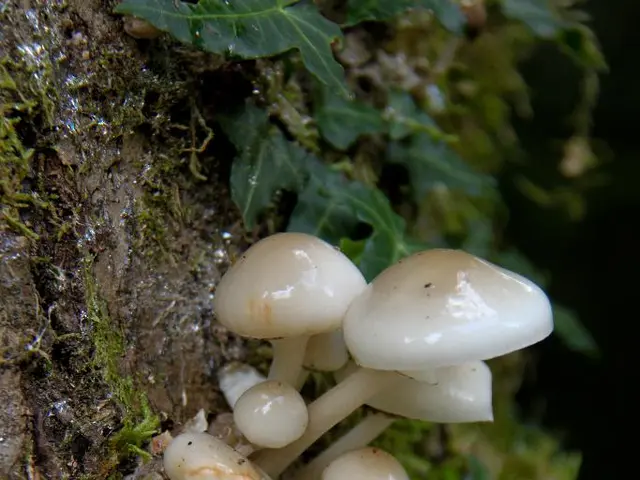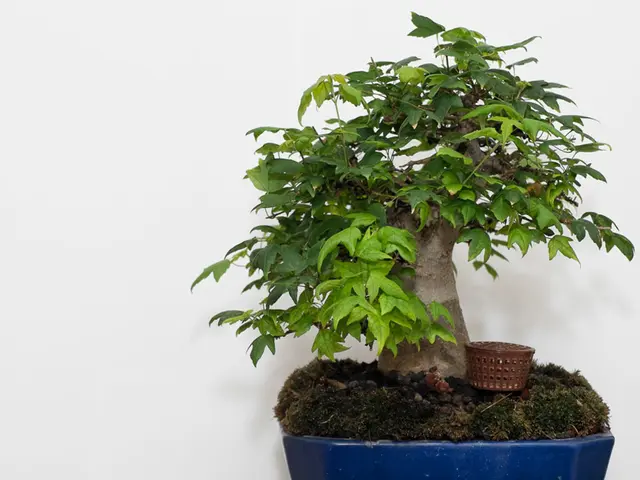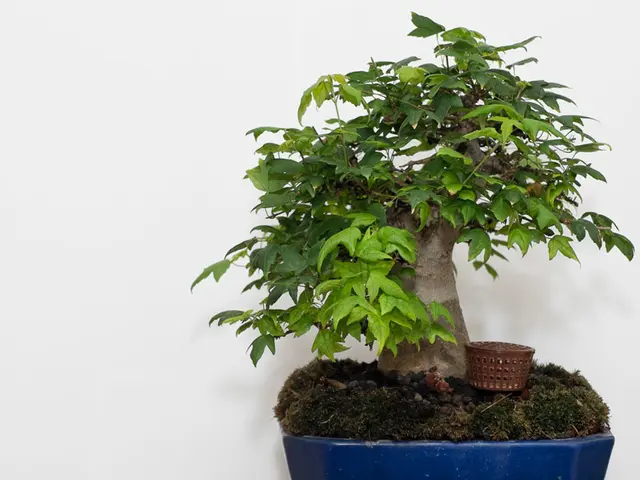Simplify Process for Guaranteed Rose Propagation Via Cuttings
Propagating Roses: A Thrifty Gardening Idea
Propagating roses from cuttings is a cost-effective and thrifty gardening idea that allows gardeners to expand their rose collection. Here's a step-by-step guide on how to successfully propagate both semi-ripe and hardwood rose cuttings.
1. Timing and Selection
Choose the right time to take your cuttings. For semi-ripe cuttings, do so in late summer from partially mature stems. Hardwood cuttings can be taken during dormancy or late fall when stems are fully mature and woody. Always select healthy stems free of disease or damage.
2. Cutting Preparation
Use a clean, sharp tool to cut segments about 10 cm (4 inches) long, ensuring each has 4-5 buds (nodes). Remove any flowers or flower buds to direct energy to root development.
3. Rooting Hormone
Dip the cut end of the cutting in rooting hormone powder or gel to promote root initiation.
4. Planting
Fill a 1-gallon pot (3.8L) with well-draining compost mixed with perlite or vermiculite. Position the stem toward the edge of the pot, with three cuttings evenly spaced out in one pot. For hardwood cuttings, planting can be done outdoors in well-prepared soil.
5. Environment
Keep cuttings in a humid environment, out of direct sunlight, maintaining consistent moisture but avoiding soggy conditions. Covering cuttings with a plastic dome or bag helps maintain humidity.
6. Checking for Rooting
After 2-3 weeks for semi-ripe cuttings, check for root development by gently tugging on the cutting for resistance, indicating successful rooting. Hardwood cuttings usually take longer to root.
7. Transplanting
Once rooted, gradually acclimate the new plants to less humidity and more sunlight, then transplant them into larger pots or the garden.
Remember to take at least three cuttings from the plant, and if not potting up the cuttings immediately, seal them in a Ziploc bag to retain freshness and moisture. Nick some nodes below the soil line to encourage root growth. In spring, repot cuttings into individual pots, preserving as much of the roots as possible.
Gardeners can effectively expand their rose collection using both semi-ripe and hardwood cuttings. Videos and guides offer visual support for these methods if you prefer a demonstration style. To increase the chances of success, take several good-quality cuttings from each plant.
Softwood cuttings are delicate and need a lot of TLC to develop into successful plants, making them less successful for home growers. Ensure the soil doesn't dry out while waiting for spring, and position the cuttings in a protected spot that receives some shade from the midday sun.
By following these steps, you can enjoy the beauty of roses in your garden all year round. Happy propagating!
Implementing home-and-garden practices such as propagating roses can contribute to an improved lifestyle by enabling gardeners to possess a diverse collection of homegrown roses. Using both semi-ripe and hardwood rose cuttings, gardeners can boost their home-and-garden hobbies and create vibrant home-and-garden settings through gardening.




